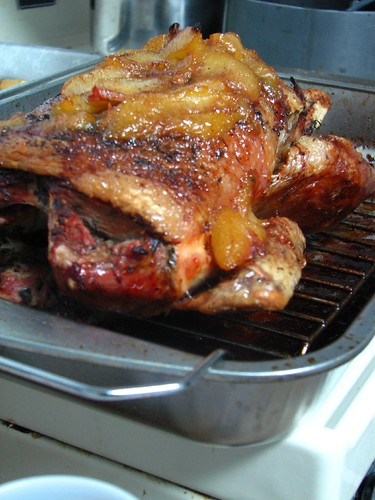
Thanks to Robert-Gilles, a Frenchman living in Japan (oh we MUST talk!), I'm reminded that I meant to address the use of pretty much the entire parsley bunch in my latest video. A pop up, well pops up, that addresses whether or not you should stem parley. By "stemming" it I mean picking the leaves off of the stems before cutting up the herb. If you've watched the video then you know I didn't stem the part I used.
I say this as a golden rule above all others when cooking: use your instincts. Follow that with your senses: sight, smell, taste, texture. And finalize your decision through the filter of common sense. That applies to every dish, every time. But back to the parsley...
This bunch of Italian (flat leaf) parsley was very verdant and lovely. The leaves burst forth virtually from the base of the bunch, and it wasn't long or "leggy" which herbs tend to be as they grow older. In other words, this was a fresh, young bunch of parsley and it had an amazing color and aroma. I remember it made a distinct impression while I was cutting it, and I am soooo tempted to attribute the perfection of this parsley to its ORGANIC origins. You'll notice that I diced it up pretty fine, although I was aware that in a dish like this, the crunch from tiny bits of stem would actually be a welcomed contrasting texture, and made the conscious decision to utilize both the leaves and the stem up to the point where the leaves began to grow out. That was my choice, and tasting the dish, I'm happy with it.
When NOT to stem:Thinking holistically, and in the vein of minimizing waste, using the entire herb is a no-brainer. Also from the Food as Medicine stream, we benefit from ingesting as much of an edible herb as possible, and in the case of parsley, as often as possible. Some herbs and plants have tender stems up where the leaves are, and you'll find this in baby or young greens as well. I don't necessary stem or "vein" my young turnips or kale. Depending on the dish, I don't always stem basil up at the very top where the tiny leaves make florettes (I admit that I enjoy eating basil florettes, though everyone might not). Again, this is one of those choices that comes from knowing your ingredients, knowing the outcome that you're shooting for, and using your senses (including the common one) to determine your next move.
Still as a professional chef, I gotta tell you, there are times when you won't want to use the entire herb.
When to stem: ~If you're making a dish that doesn't benefit from texture, then definitely stem your parsley. Also be sure to cut a very fine dice or perhaps even a chiffonade if you're going to circumvent the dare-I-say? toughness that parsley can bring to the dish.
~If you have a good use for the stems, like say you're making some stock or soup in the very near future, or you plan to steep the stems like tea for a medicinal concoction.
~If you're making a garnish or something where the chopped up stems will be visible and therefore a distraction to the eye. Of course now we're getting into Food as Art instead of Food as Medicine, the latter of which would encourage you to eat the entire plant for the most health benefits. The aesthetics of what you eat is very important, or can be if you allow yourself to really enjoy your food. This is when food starts to get decadent!
~If you are making a shi-shi frou-frou dish and having hoity toity guests over to eat it. They WILL notice your parsley stems and will think you are either lazy or ignorant for not having the sense to pick your parsley. Which leads me to the last reason (said in jest)...
~If you are working for a French-trained chef. They pick everything. Thyme, parsley, chervil. You got it? You pick it! And you do it quickly and right the first time, and with nothing more than a "Oui chef! Right away chef!" and a skip in your clogs to get it done.
So there you have it folks! The much-longer-than-I-intended answer to whether or not you should pick your parsley. And lest you think I'm being too serious about my food (let's face it, food is what I
DO) let me leave you with this thought: You can pick your parsley, and you can pick your nose, but you can't wipe your parsley on the couch!









